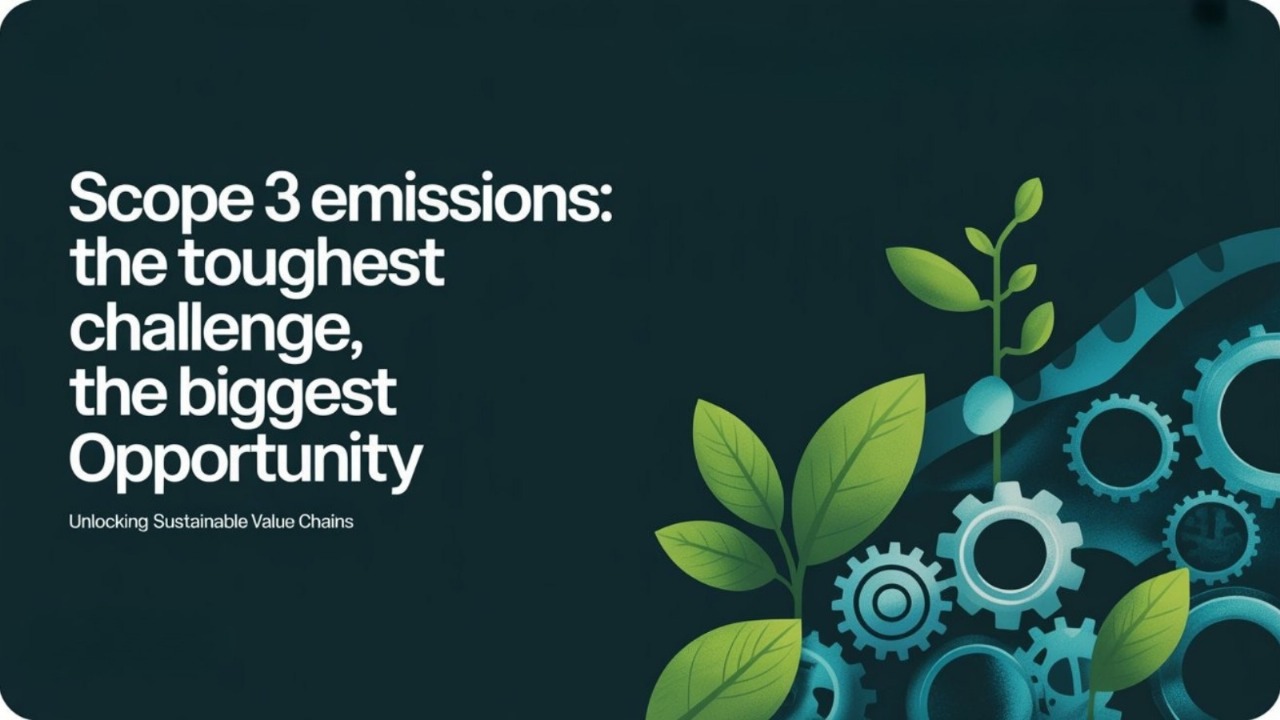Scope 3 Emissions
The Toughest Challenge, The Biggest Opportunity

In 2025, businesses around the world are under a sustainability spotlight. From the EU’s CBAM and its $8 billion tariff threat to SEC climate disclosures and $50 billion+ in ESG funds hunting for transparency, companies are being pushed to track carbon emissions like never before. But while Scope 1 and 2 emissions are tough enough, Scope 3 emissions, those indirect emissions across your value chain are the real beast. They’re the hardest to measure and, frankly, the most critical. At WOCE, we’re unpacking why Scope 3 is such a challenge, why it matters more than ever, and how businesses globally can tackle it to stay ahead in the ESG game.
What Are Scope 3 Emissions?
Let’s break it down. Scope 1 emissions are direct, like fuel burned in your factory. Scope 2 covers indirect emissions from purchased electricity. Scope 3, though, is everything else in your value chain - upstream and downstream. Think raw material extraction, supplier operations, product transportation, employee commuting, and even how customers use or dispose of your products. For a textile firm, Scope 3 includes cotton farming, dyeing processes, shipping garments, and laundry emissions from end-users. Scope 3 is massive. Industry reports estimate it accounts for 70-90% of a company’s total carbon footprint in sectors like retail, cement, and steel. In India, where supply chains span thousands of suppliers, Scope 3’s complexity is next-level.
Why Are Scope 3 Emissions So Hard to Measure?
Measuring Scope 3 is like herding cats - here’s why:
1. Data Chaos: Scope 3 spans hundreds (if not thousands) of suppliers. A European electronics firm might source lithium from Chile, assemble in Vietnam, and ship globally. Each supplier’s emissions data? Fragmented, inconsistent, and often nonexistent. Unlike Scope 1’s fuel logs or Scope 2’s utility bills, Scope 3 data depends on third parties who may not even have tracking systems.
2. Global Supply Chains: CBAM, SEC disclosures, CSRD - all demand cross-border compliance. A cement company sourcing clinker from Turkey or exporting to Germany must chase data across regulatory systems, languages, and reporting standards. It’s a data labyrinth.
3. Diverse Categories: Scope 3 spans 15 categories per the GHG Protocol, from purchased goods to business travel to product end-of-life. Each requires different data fuel for shipping, electricity for supplier factories, or even consumer behavior. Mapping this is a logistical nightmare.
4. Estimation Woes: Without direct data, firms rely on estimates like industry averages or spend-based models. These are often inaccurate. For example, assuming all cotton suppliers emit the same ignores organic vs. conventional farming differences, skewing your footprint.
Even today, most global ESG reporters struggle. Only 40% of Fortune 500 firms disclosed Scope 3 data fully in 2024, per CDP. The rest? Falling short of investor and regulatory expectations.
Why Scope 3 Emissions Are Critical
If they’re so hard, why bother? Because Scope 3 is make-or-break:
1. Regulatory Heat: BAM kicks in fully from 2026. Exporters to the EU - especially in steel, aluminum, cement—face carbon tariffs based on lifecycle emissions, including Scope 3. In the U.S., proposed SEC climate rules and California’s SB-253 mandate Scope 3 reporting. Non-compliance could cost millions.
2. Investor Demands: ESG investors manage over $130 trillion globally (Glasgow Financial Alliance for Net Zero). They demand full value chain visibility. BlackRock, State Street, and pension funds are voting against companies that dodge Scope 3 transparency.
3. Customer Pressure: 2025 consumers are climate-aware. In Europe and North America, 80% of Gen Z buyers prefer low-carbon brands. Brands like Patagonia, IKEA, and Unilever have gained trust and market share by cleaning up their Scope 3.
4. Risk Exposure: Scope 3 is where your vulnerabilities hide - emissions from unknown suppliers, climate risk in agricultural regions, CBAM-triggering inefficiencies. Mapping Scope 3 isn’t just reporting - it’s risk mitigation.
Ignoring Scope 3 is like ignoring 90% of an iceberg - you’ll sink
Real-World Challenges: An Indian Lens
Consider a mid-sized apparel brand based in London. Its Scope 3 includes cotton grown in India, fabric dyed in Bangladesh, warehousing in Germany, and global e-commerce deliveries. Getting emissions data from each link is overwhelming. Or take a U.S. cement exporter - if its Vietnamese supplier can’t track clinker emissions, CBAM tariffs could eat into margins.
Multinational giants struggle too. Even in 2024, fewer than 30% of S&P 500 companies disclosed complete Scope 3 data, despite investor mandates. Add geopolitical shifts - like reduced U.S. funding for climate science or rising scrutiny under the EU’s greenwashing rules - and the stakes grow higher.
How to Tackle Scope 3: A Playbook
Daunted? Don’t be. Here’s how Indian businesses can crack Scope 3:
1. Start Small: Focus on high-impact categories - like purchased goods or transportation, often 60% of Scope 3. A steel firm can prioritize iron ore suppliers first.
2. Engage Suppliers: Survey key suppliers for emissions data. Offer training or incentives - like faster payments for low-carbon practices. A 2024 pilot by Hindalco saw 15% supplier data uptake, per industry reports.
3. Use Estimates Wisely: Where data is missing, use GHG Protocol tools or industry benchmarks. A textile firm can estimate dyeing emissions from regional averages, refining later.
4. Leverage Tech:Tools like esgpro.ai automate Scope 3 tracking, standardize emission factors, and compile reports in line with frameworks like GRI and BRSR. Game-changing for time-strapped ESG teams.
5. Offset Strategically: Can’t cut all emissions? Buy verified carbon credits via marketplaces. A retailer offsetting shipping emissions can market low-carbon products, winning Gen Z.
The Payoff: Why It’s Worth It
Mastering Scope 3 isn’t just compliance—it’s profit. ESG-compliant firms enjoy 10-20% lower borrowing costs, per RBI data, as banks greenlight loans. CBAM-ready exporters save millions in tariffs. Investors, eyeing $50 billion in India’s ESG funds, reward Scope 3 transparency with higher valuations. Customers flock to brands with low-carbon supply chains - think Tata’s 12% sales boost. ESG-aligned firms enjoy 10-20% lower borrowing costs, according to global green finance data, as banks and investors increasingly favor climate-resilient portfolios. Exporters prepared for CBAM save millions in avoided carbon tariffs
Conclusion: Scope 3 Is Your Edge
Scope 3 emissions are the toughest to measure - sprawling, data-hungry, and complex. But they’re also the most critical, driving 70-90% of your carbon footprint. In 2025, with CBAM, SEC, CSRD, and global investor demands rising, ignoring Scope 3 isn’t an option. Start small. Leverage tech. Offset smartly. Turn Scope 3 from a reporting headache into your strategic edge.




